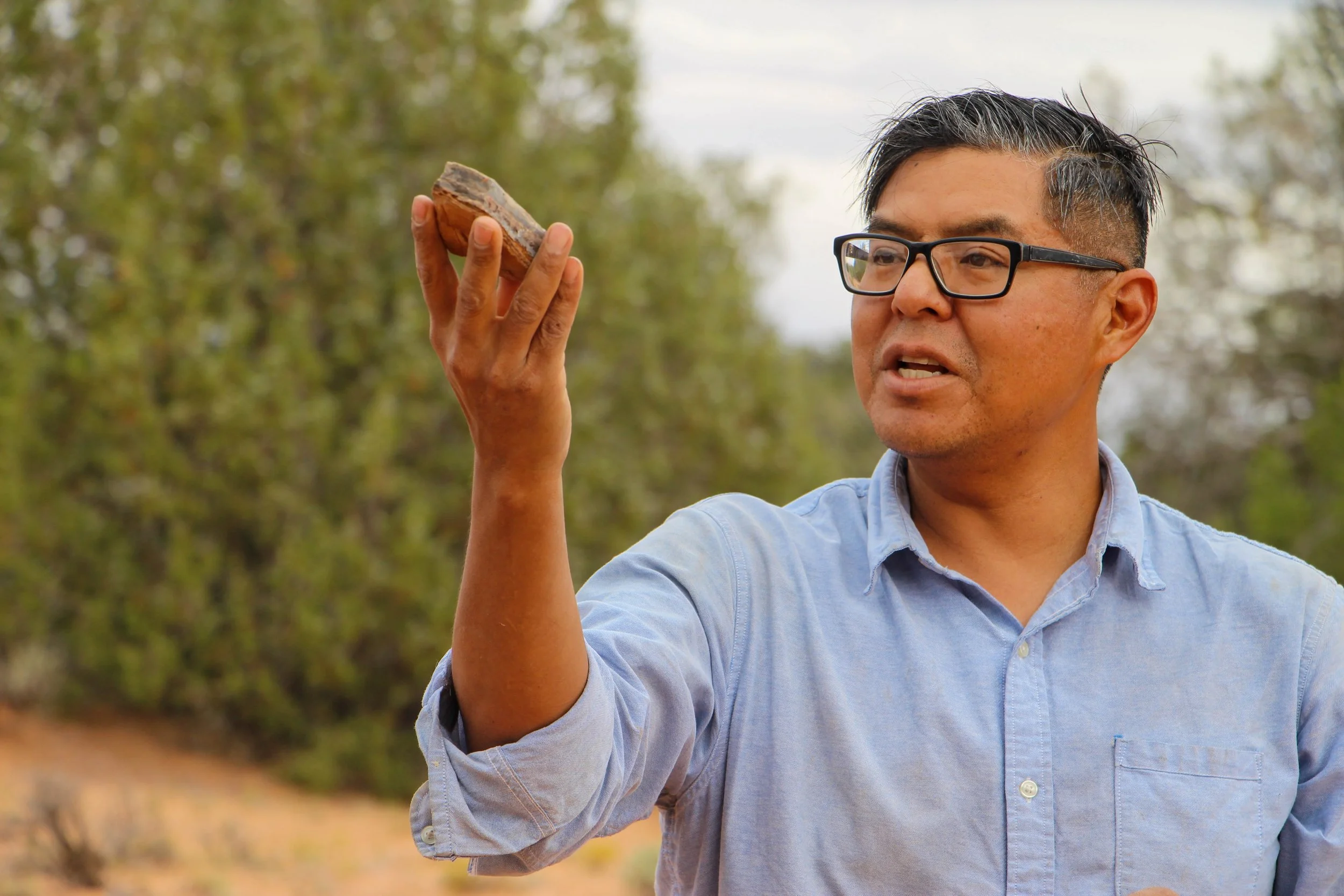Joe Pachak
Artist & Archeologist
Bluff, UT
10/01/2021-10/08/2021
“We don’t take this,” says Joe Pachak, holding a pre-historic chisel in his right hand. As an archeologist, Joe recognizes the importance of leaving artifacts in place, their story and context intact. He has been searching the red rock desert for indigenous remnants since he was a young boy roaming Pueblo, CO with his father. Joe has made home the small town of Bluff, UT working as an artist. With an attentive eye and a kind demeanor, he offers detailed interpretations of rock art pecked into the sandstone panels of Sand Island, along the rim of an oxbow of the San Juan River, Wolf Man, and The Procession. He explains that the petroglyph styles on the panels are Basketmaker, Ute and Glen Canyon Linear.
Westies hike with Joe over sandstone slabs, stopping to look at flakes, pottery sherds or rusted milk cans. Joe sees charred rocks and determines a pit where a fire burned centuries before. He points to carvings of animals and people desert bighorns playing flutes, snakes, processions on stone – stories from centuries before etched into rock. Every step with Joe is intentional: “we’re walking in the remains of a culture.”
The teachings he has learned from Native American cultures are significant to him. He contributes to documenting panels through drawings and sketches. Each year, Joe constructs wooden sculptures to burn as a symbol of renewal. A pair of 28-foot-tall ravens were burned last winter solstice.To Joe, it is creativity that will “make us actual.” It will help us “find out who we are as individuals and a community.” Placing the chisel back where he found it, he grins, “I say let’s go look at rock art.”
By Neave Fleming


